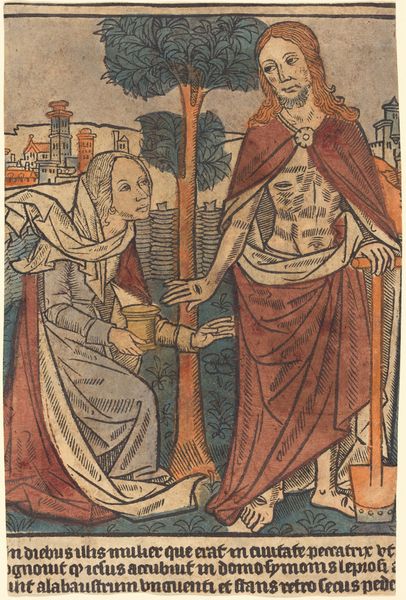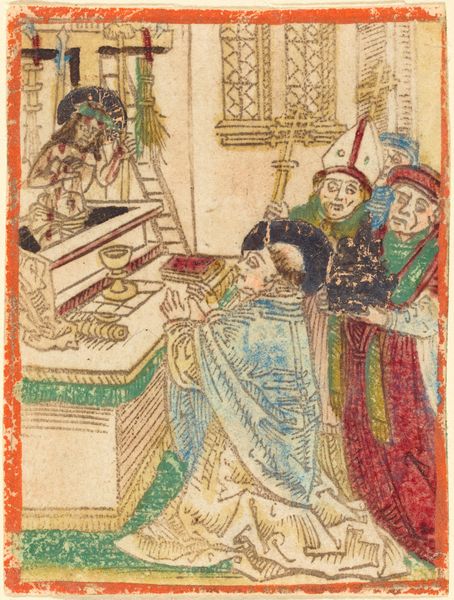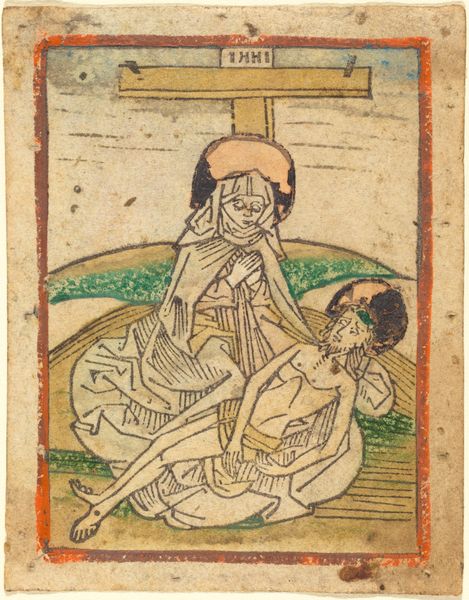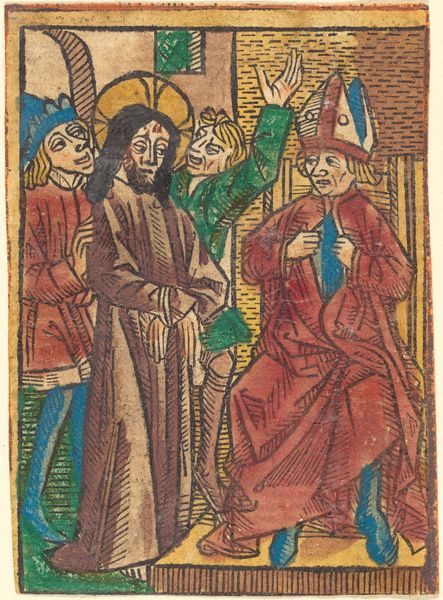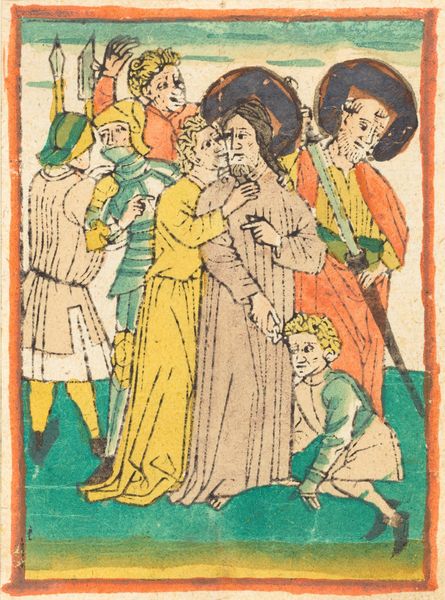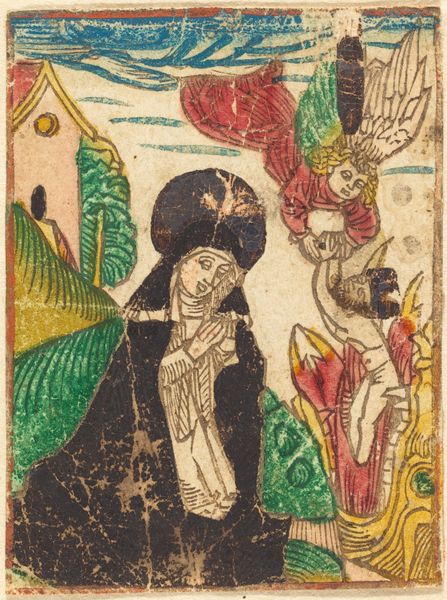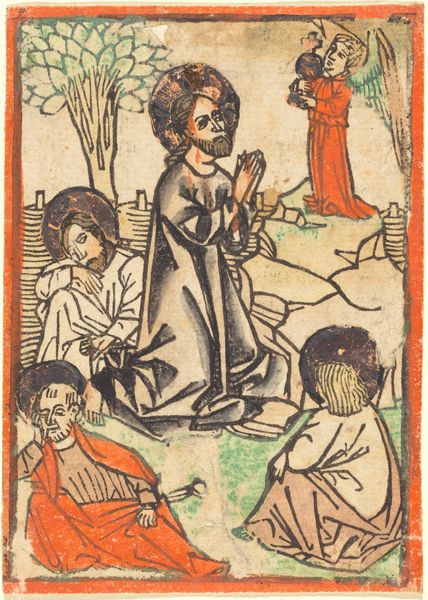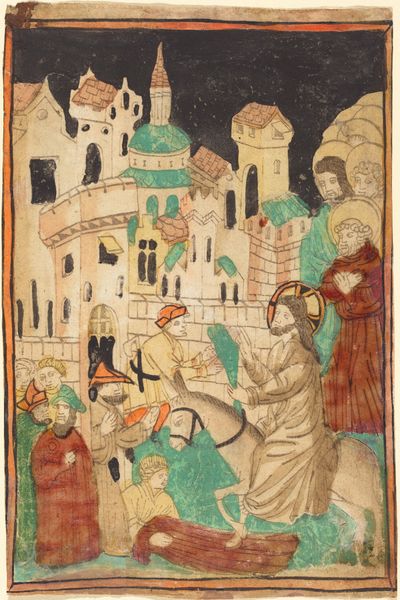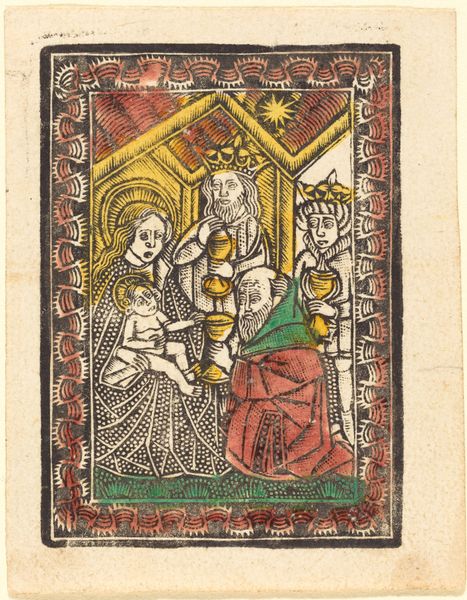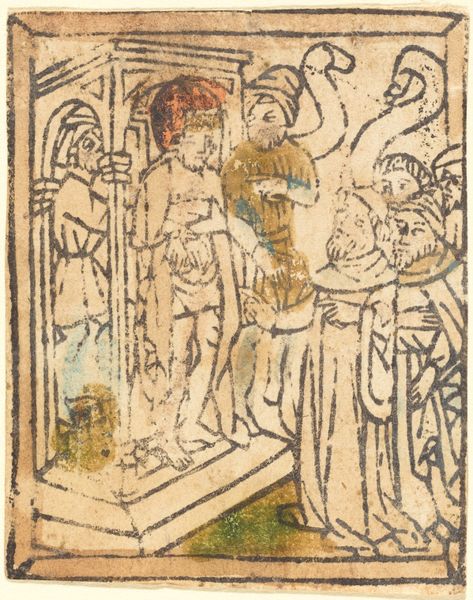
drawing, tempera, print, ink
#
drawing
#
narrative-art
#
ink painting
#
tempera
# print
#
landscape
#
figuration
#
ink
#
italian-renaissance
#
watercolor
Copyright: National Gallery of Art: CC0 1.0
Curator: This intriguing print, thought to date to around 1485, depicts Christ and the Woman of Samaria. Though created by an anonymous artist, it carries echoes of the Italian Renaissance in its rendering and composition. What is your immediate response to it? Editor: The colours are fascinating. This palette of softened reds, yellows, and greens, framed with sharp, almost cartoonish outlines, strikes me as naive but charming. The shallowness of the picture plane contributes to that flattened feeling. Curator: Indeed, the artist prioritises symbolism and clarity of narrative over naturalism. This biblical episode, found in the Gospel of John, represents a profound encounter between Jesus and a Samaritan woman, two groups traditionally separated by deep-seated prejudices. Editor: Notice how the figures are positioned on either side of the well. This creates a balanced yet also oppositional compositional element. The verticality of the well is echoed in the buildings of the town in the distance. It visually structures the space. Curator: The well, of course, serves as the central visual metaphor. Wells were common gathering places, so the encounter has a double symbolism; one, obviously, for spiritual quenching and refreshment, but also as a signifier of community, and here, perhaps, the breakdown of societal barriers. Editor: Also of note, the relatively muted halo behind Christ's head. This understated approach adds a delicate quality. The architectural background is also stylised; these elements, including the textures created through cross-hatching, are all working towards creating meaning. Curator: These visual cues underline the weight and importance of the exchange between them, where the woman eventually recognises him as the Messiah. She is forever changed as a result of that meeting, bearing witness back to her own people and beginning to repair centuries of cultural and religious division. Editor: It really pulls us in by highlighting a key moment through artful use of color and form. It allows for complex symbolism while inviting us to really see its deeper purpose. Curator: A fruitful exercise in understanding the layered meanings carried by relatively simple pictorial forms. Editor: Absolutely; a potent reminder that what we see and how we interpret what is shown all play critical roles in assigning values and understandings of self and society.
Comments
No comments
Be the first to comment and join the conversation on the ultimate creative platform.


